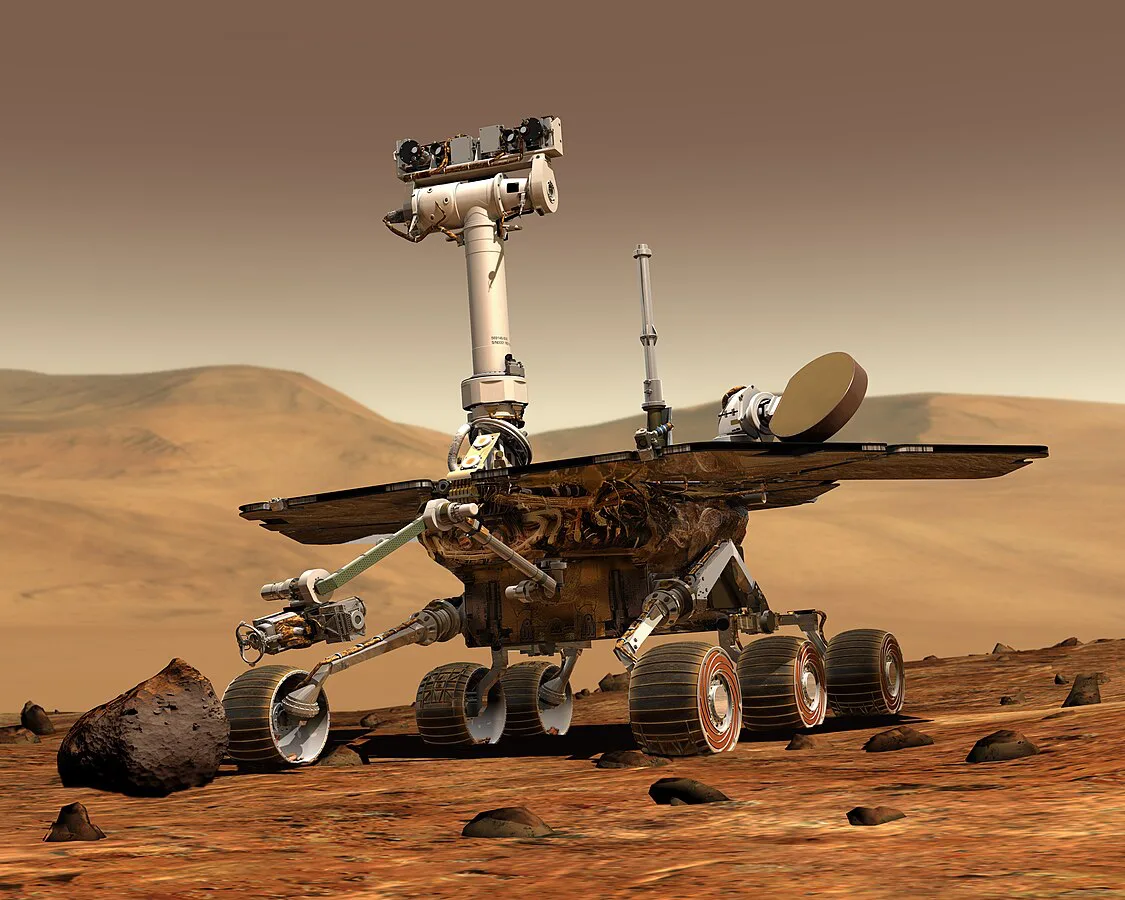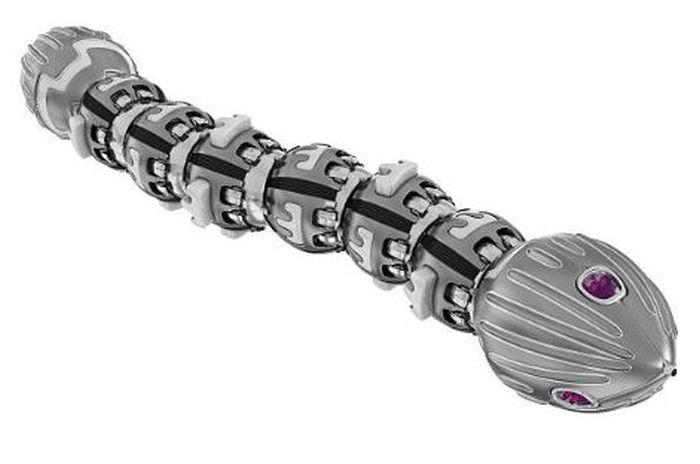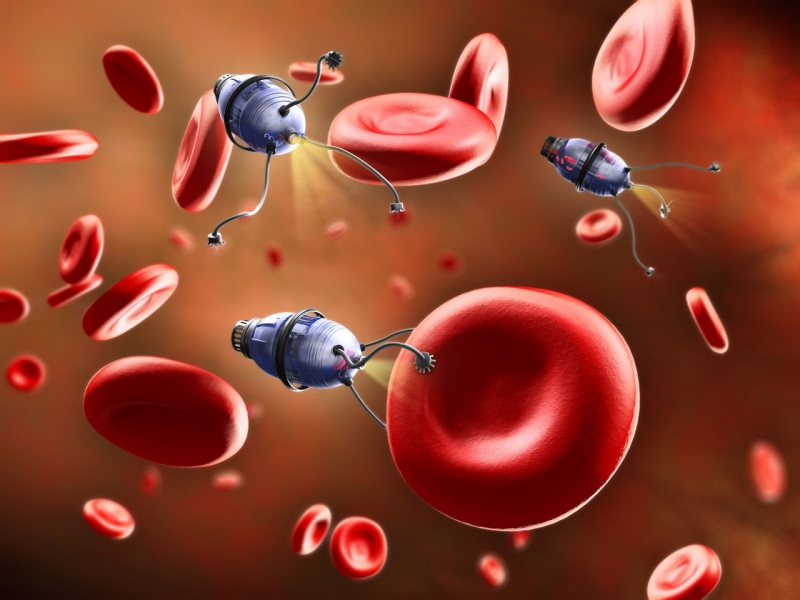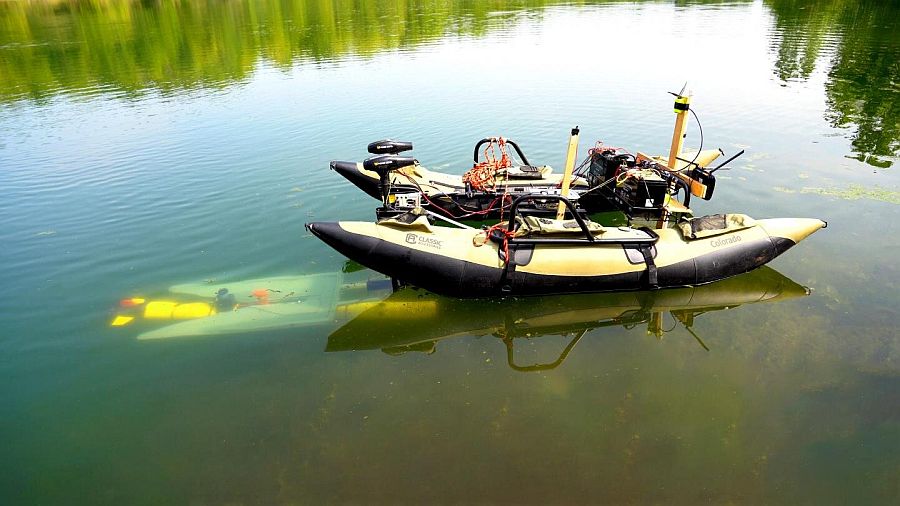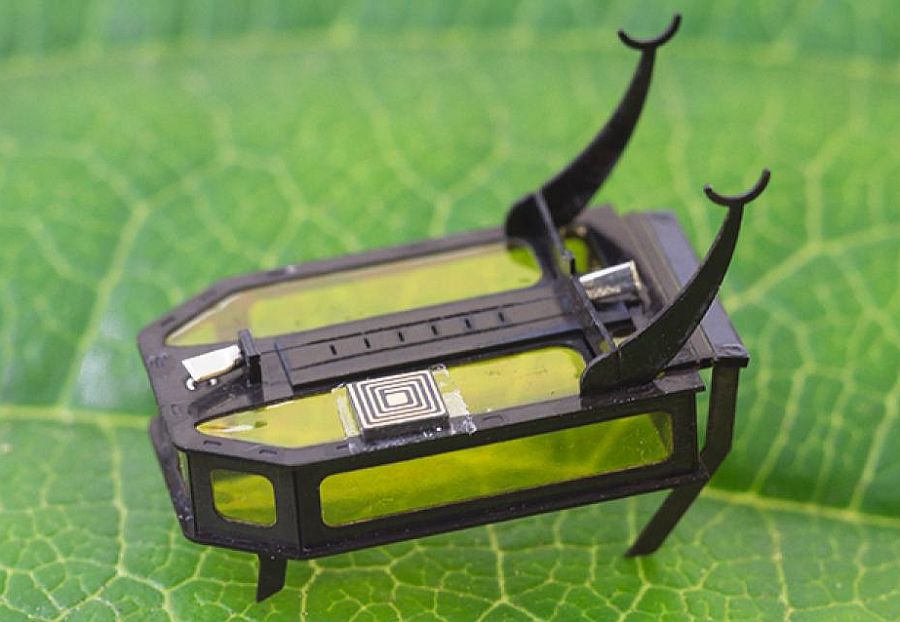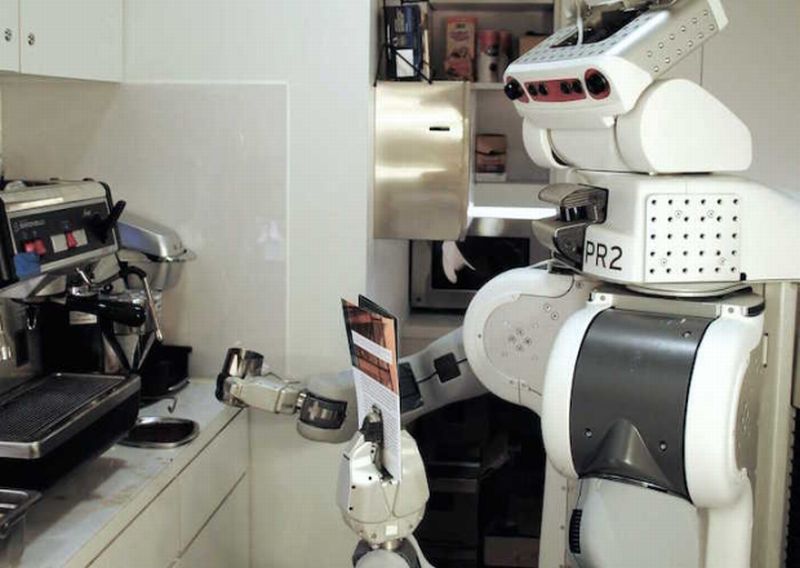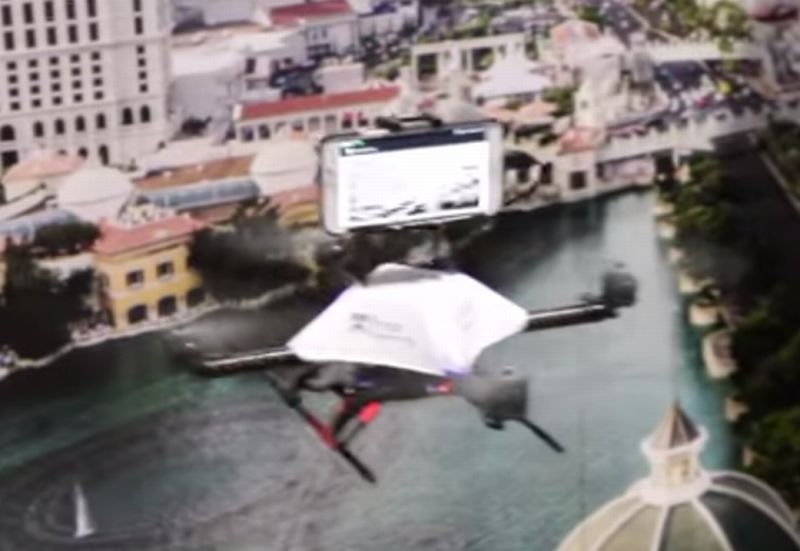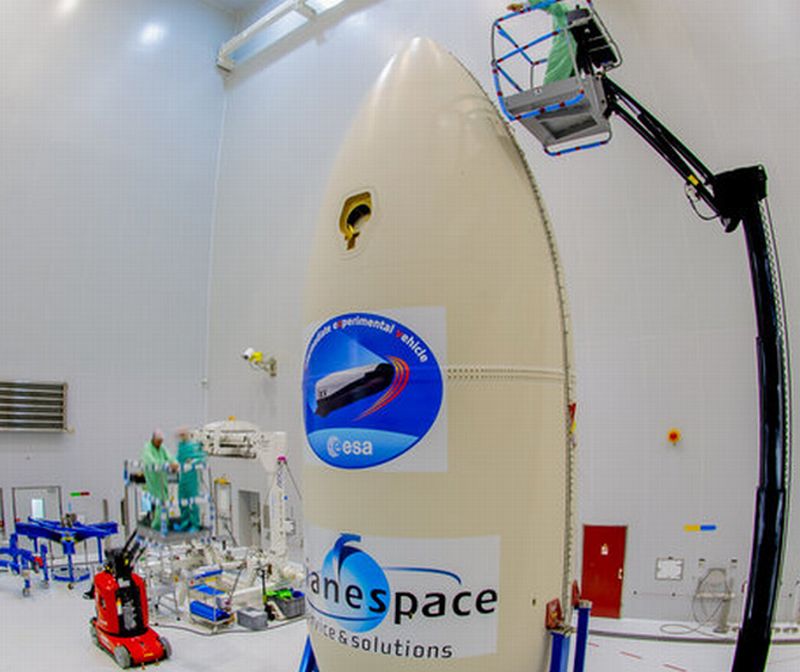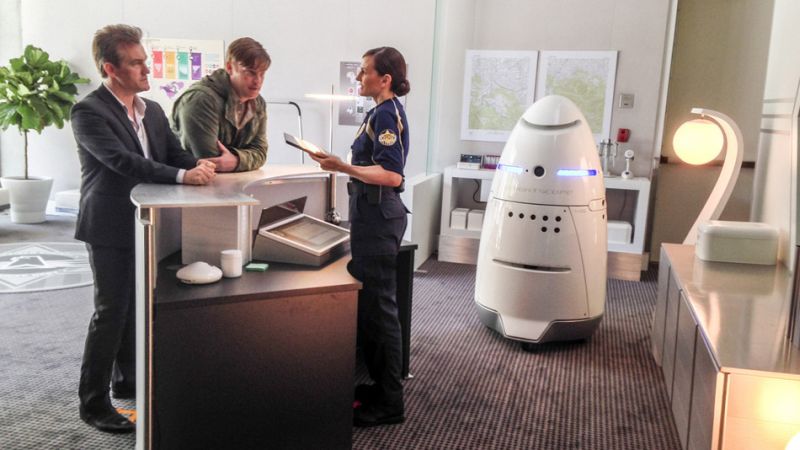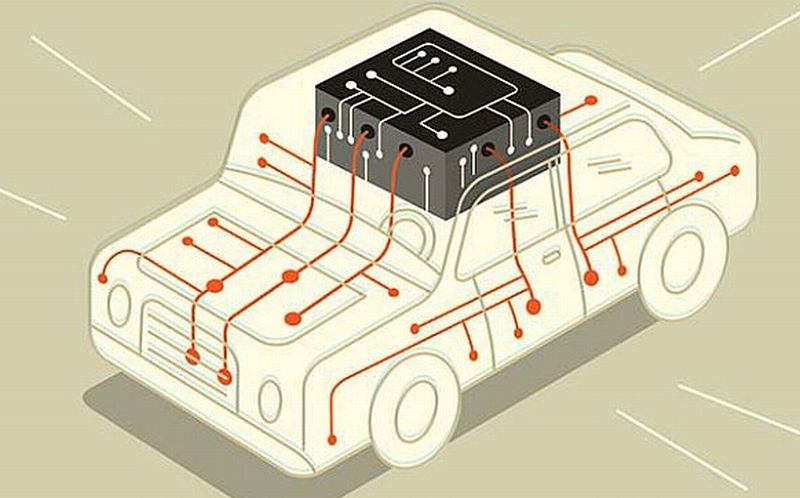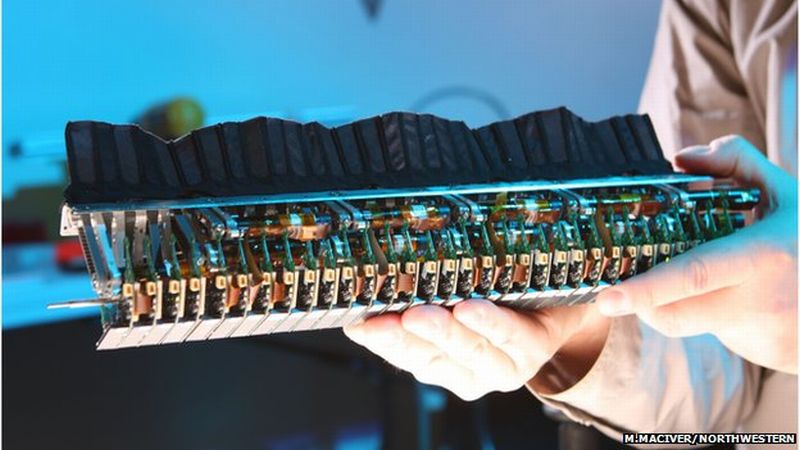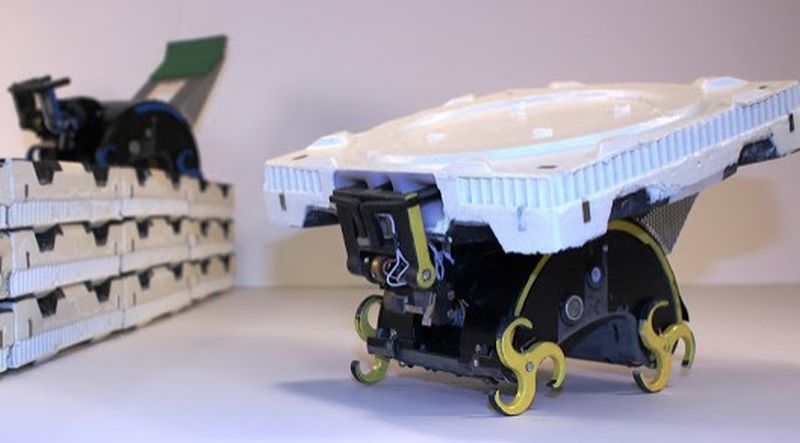Rovers on Mars are constantly monitored and maneuvered by humans on Earth. However, robots on missions to Saturn or Jupiter’s moons can’t get timely commands from Earth. What if these machines could make decisions on the fly? Instead of waiting for an “order”, how about these bots making autonomous choice? Thinking on these lines of thought, researchers at the University of Illinois Urbana-Champaign came up with a cool way for these robots to decide where and how to collect terrain samples on their own.
Search Results for: autonomous
Magnetic Tentacle Robot for Autonomous Endoscopy: Soft Catheters
Magnetic tentacle robot, strange it may sound but researchers at STORM Lab at the University of Leeds have come up with a tiny canular form of robot that can explore the smallest bronchial tubes in the lungs. The nano tubiform bot measures around 2 millimetres in diameter. That happens to be two times the size of the tip of a ballpoint pen. The tentacle robot will be guided from the outside with the help of (external) magnets.
Light controlled Organic Microswimmers: Semi Autonomous Microrobots
The idea that nanobots flowing through our blood streams to deliver localised medication or to detect any tumour formation is no more a far-fetched dream. A group of researchers from the Max Planck Institute for Intelligent Systems (MPI-IS) in collaboration with the Max Planck Institute for Solid State Research (MPI-FKF), have developed microswimmers that can navigate through biological fluids, areas that are otherwise difficult to access. Steering is done through external form of light energy.
Portable Docking Station For Autonomous Charging: Marine Robotics
Rescue missions under natural disasters or man-made catastrophes are not only threatening for the safety of people but also quiet complex and dangerous for a rescue team. In order to increase the efficiency, robots are used in search and rescue (SAR) missions.
RoBeetle: Autonomous Crawling Bot Driven By Methanol Combustion
Researchers have long envisioned designing tiny intelligent autonomous machines that are capable of exploring dangerous environments or the areas where tiny bots can work with full efficiency.
Origami Robot: Fold, Walks, Swim and Degrades Autonomously
Researchers from CS & AI at MIT in collaboration with Technische Universitat, Germany have created a self-folding bot based on Japanese concept of folding paper into decorative shapes and figures called origami. The tiny bot fold, walks, swim and degrades autonomously.
PR2 can prepare coffee autonomously: The Robo Barista
Researchers at Cornell have unleashed PR2, a robot that can prepare coffee autonomously. All the bot require is coffee maker of course and a manual of natural language instructions.
Smartphone driven Autonomous Drone: The Smart Copter
For the first time consumer-grade electronics are used for programming autonomous drones. This drone makes use of smartphone as its brain. The phone senses its environment by taking real time pictures. Even the real time computation is done on the device itself along with higher-level autonomy, maneuvering, navigation, control and computer vision algorithms. The product is the brainchild of GRASP Laboratory, University Of Pennsylvania. Click on the video below to see the autonomous flying robot: This makes me think, if you lose your smartphone, you’d end up losing the drone…
ESA’s Space Taxi ready for Flight: Mastering Autonomous Return from Orbit
Europe’s much-awaited “Space Taxi” is finally ready for its first test flight and reentry mission, which is scheduled to be held on February 11.
The Autonomous K5: A Bot for Predicting and Preventing Crime
Silicon Valley, the renowned center for invention and development, is always in news. Lately, Microsoft’s robo cop has been creating waves in the tech ocean of the Valley. Start-up, Knightscope has named its security robot K5. Makers of the robot using high tech robotics, predictive analytics and social engagement, wanted to use the bot in predicting and preventing crime. Till now, the company has designed seven robots and envisions positioning four more by the end of this year.
Fully Autonomous Vehicles: Profit Center for Chipmakers
IHS Technology envision that market for MCUs and processor units would touch half a billion dollars by 2020. Similarly, revenues from optical sensors would escalate 7 times by the same year. Google has already rolled in its driverless car and by the end of 2014 we would be witnessing more such autonomous vehicles from robot manufacturers as well, as in robocars. As of now, these cars are not functioning as fully autonomous vehicles and they do require human intervention, especially to avoid unanticipated events. In fact, they are being operated…
Ghost Knifefish Inspired Autonomous Underwater Vehicle: Biomimicry
In an attempt to design an underwater vehicle that can go into the depths of ocean, which are not, accessible or not safe for humans to dive in, scientists are studying the Ghost knifefish method of locomotion. The fish are known to hunt in the murky water of the Amazon basin with precision and to sense the environment, rely on the current that they pass through the water and whirl their long fin for smooth motion to move both horizontally (forward and backward) as well as vertically.
Termites Inspire Crew of Tiny Autonomous Bots: Biomimicry
Inspired from termites, which are usually known for causing damages to the buildings, researchers from Harvard University have created a crew of tiny robots that are designed to work autonomously. The bio-inspired robots termed as TERMES can work without any central supervision and can carry bricks to construct structures as towers, castles and pyramids.
Interview: Dohyeon Lee, Robotics Scientist at Pohang University of Science & Tech, South Korea
Last week, I came across something that genuinely blew my mind – a flying squirrel-inspired drone with foldable wings. Yep, a drone that mimics how a squirrel glides through the air. It was one of those rare “wait, what?” moments that made me want to dig deeper. So, I reached out to the team behind it. Dohyeon Lee, one of the researchers on the project, said yes to an email interview.
Interview: Prof. Dr. Michael Gerlich, Head of Foresight & Sustainability, SBS Swiss Business School, Switzerland
Recently, I read one research paper titled, “AI Tools in Society: Impacts on Cognitive Offloading and the Future of Critical Thinking” by Prof. Dr. Michael Gerlich. It is one of those research pieces, which I find extremely interesting and want to get into the depth and collect more insights. So, I tried to touch base with the research scientist and asked for his time for an email interview fortunately, he agreed. Research scientists, like Dr. Gerlich are my intellectual heroes who, despite their towering intellect and busy schedule, remain grounded…

